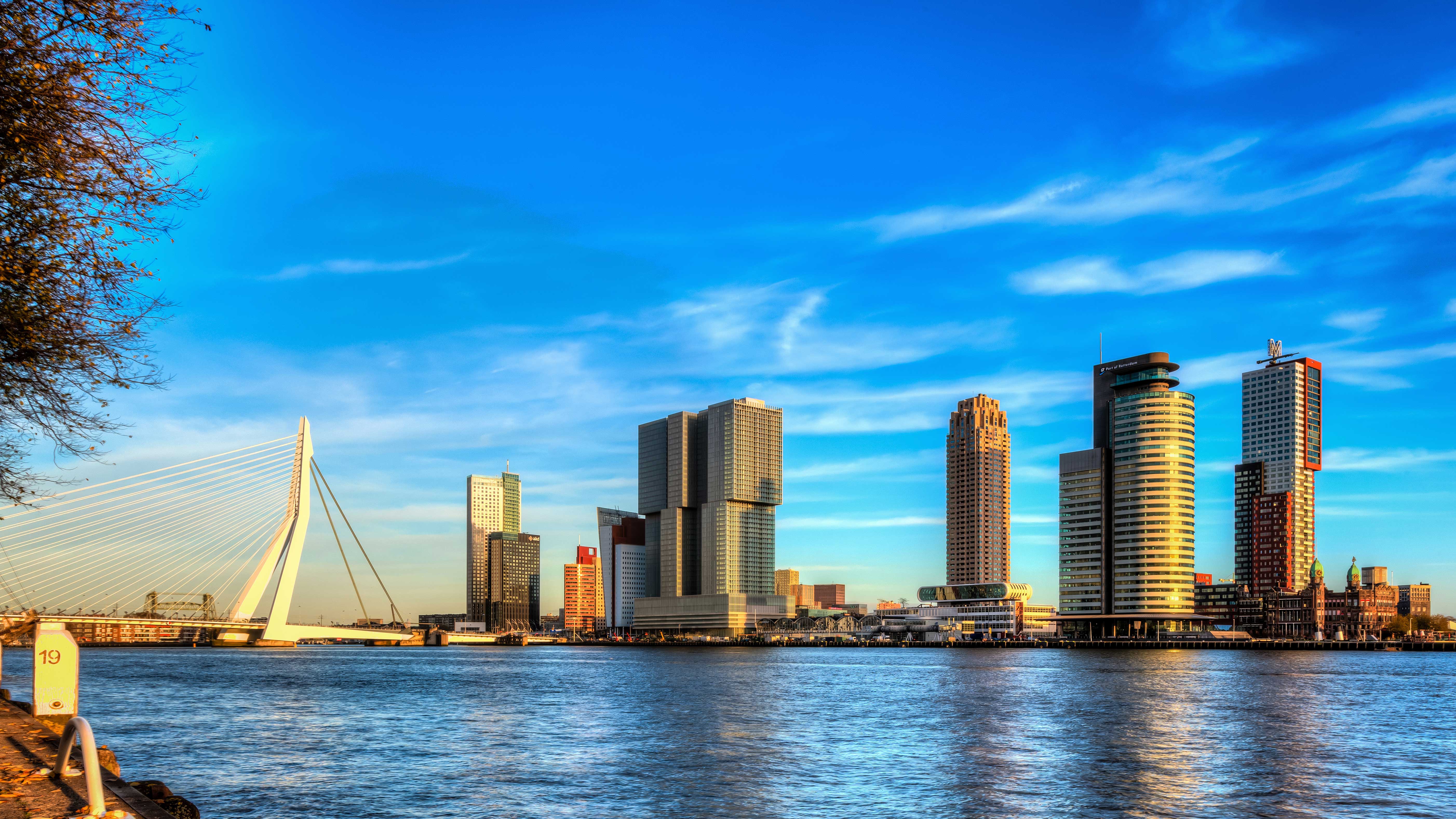A Towering Presence on the Rotterdam Skyline
De Rotterdam, a striking architectural feat, stands prominently on the Wilhelminapier in Rotterdam, Netherlands. Designed by the renowned architect Rem Koolhaas, this mixed-use building complex is often referred to as a "vertical city." Completed in 2013, it is one of the largest buildings in the Netherlands, with a total floor area of approximately 160,000 square meters.
Architectural Design and Structure

The building consists of three interconnected towers, each rising to 44 floors. These towers are set on a shared six-story base, creating a unified structure that houses offices, residential apartments, a hotel, and various amenities. The design reflects Koolhaas's vision of a compact urban environment, where living, working, and leisure activities coexist seamlessly.

Mixed-Use Functionality
- Offices: The complex includes over 70,000 square meters of office space, attracting businesses with its modern facilities and prime location.
- Residential: Approximately 240 apartments offer stunning views of the Maas River and the cityscape, providing a unique urban living experience.
- Hotel: The nhow Rotterdam hotel occupies part of the building, featuring 278 rooms and a rooftop terrace that offers panoramic views.
- Amenities: The base of the building includes restaurants, shops, and fitness facilities, catering to both residents and visitors.

Impact on Rotterdam's Urban Landscape
De Rotterdam has significantly influenced the city's skyline and urban development. Its presence on the Wilhelminapier has spurred further investments and developments in the area, transforming it into a vibrant hub of activity. The building's design and functionality exemplify modern urban planning, where density and mixed-use spaces are prioritized to enhance city living.
Sustainability Features
The building incorporates several sustainable design elements, such as energy-efficient systems and materials that reduce its environmental footprint. These features align with Rotterdam's broader goals of promoting sustainable urban development.
Cultural and Economic Significance
De Rotterdam is not just an architectural landmark; it is a symbol of the city's economic resilience and cultural dynamism. The building hosts various cultural events and exhibitions, contributing to Rotterdam's reputation as a center for innovation and creativity.
A Hub for Events and Activities
The building's public spaces and facilities are frequently used for conferences, art exhibitions, and other cultural events, drawing both locals and tourists. This aspect of De Rotterdam enhances its role as a central gathering place in the city.
Conclusion
De Rotterdam stands as a testament to innovative urban design and planning. Its multifunctional nature and strategic location make it a pivotal part of Rotterdam's urban fabric, influencing both the skyline and the city's cultural and economic landscape.










